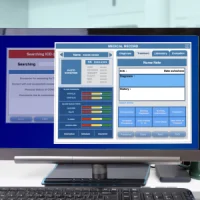In the last several years the use of electronic health information exchange among hospitals and physicians has steadily increased. However, according to a recent survey from the U.S. Government Accountability Office (GAO), disparities remain among rural and small hospitals as they may be unable to afford to participate.
Whilst the use of various electronic exchange methods increased among hospitals and physicians, GAO discovered that as of 2021, use among small and rural hospital were much lower than that of larger hospitals.
Due to the lack of financial and technical resources, such as adequate IT staff and sufficient access to broadband internet, providers are unlikely to participate in electronic exchange.
The GAO survey found that:
- Whilst 48 percent of large and medium sized hospitals often send electronic information to EHR vendors, only 30 percent of small and rural hospitals do.
- 28 percent of small and rural hospitals frequently send electronic information to a national information exchange network, whilst this was the case for 43 percent of larger and medium sized hospitals.
- 36 percent of small and rural hospitals frequently send electronic information to local or regional information exchange networks, whilst 56 percent of larger and medium sized hospitals claimed to send this information.
- Stakeholders that participated in the GAO survey noted that the lack of financial and technological resources were the reasons preventing small and rural providers from participating in electronic exchanges.
Additionally, the report discovered that rural hospitals often used fax or mail to exchange patient health information; this activity was much higher for rural hospitals than it was for non-rural hospitals.
Lastly, federal efforts, including ONC’s Trusted Exchange Framework and Common Agreement (TEFCA), may help facilitate electronic health information exchange by providing a simpler approach to connecting with other providers. This may mitigate the costs that providers face.
However, stakeholders indicated that such efforts do not address issues such as information technology staffing shortages and gaps in broadband access. Unfortunately, they present huge challenges to electronic exchange for small and rural providers.
Source: GAO
Image Credit: iStoke








